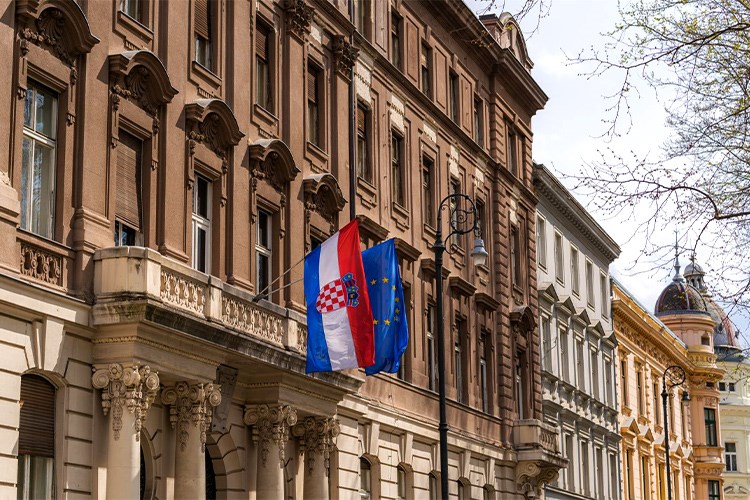The exhibition UNESCO World Heritage Sites in Croatia was opened yesterday at the Office of Public Works in Dublin by the Ambassador of the Republic of Croatia to Ireland, Mr Veselko Grubisic.
The exhibition UNESCO World Heritage Sites in Croatia was opened yesterday at the Office of Public Works in Dublin by the Ambassador of the Republic of Croatia to Ireland, Mr Veselko Grubisic.
The exhibition features photo-murals with art works of renowned Croatian photographers representing the six sites in Croatia enlisted at the World Heritage List: old city of Dubrovnik, historical complex of Split with the Palace of Diocletian, Plitvice Lakes National Park, historical city of Trogir, Episcopal complex of the Euphrasian Basilica in the Historic Centre of Porec and the Cathedral of St James in šibenik.
Ambassador Grubisic stressed the importance the Embassy is giving to organising and supporting cultural projects, as well as to encouriging cultural exchange between Croatia and Ireland on all levels.
The exhibition was first shown in 2004 in the headquarters of UNESCO in Paris to celebrate the 25th anniversary of the inscription on the first Croatian sites to be included on the list of World Heritage Sites and has since then travelled all around the world, thus presenting the most outstanding Croatian historic monuments.
The city of Dubrovnik, famously called “The Pearl of the Adriatic” by George Bernard Shaw, became an important Mediterranean sea power already in the 13th century. The old city, encircled by 2 km long, 25 m high and 6 m thick walls, features extraordinary Gothic, Renaissance and Baroque churches, monasteries, palaces and fountains. The Palace of Roman Emperor Diocletian in Split built in the late 3rd and early 4th centuries was a model of luxurious imperial residence at that time. It formed the nucleus of the urban city of Split and today combines vestiges of the original structure of the Roman foundations with Romanesque churches, medieval fortifications, Gothic palaces, as well as Romanesque and Baroque mansions. The Plitvice Lakes National Park has been formed through water flowing over limestone and chalk for thousands of years, which deposited travertine barriers, creating natural dams which in turn have created a series of beautiful lakes, caves and waterfalls. The city of Trogir was formed in the 3rd century BC by Greeks from the island of Vis and is today a remarkable example of urban landscape built on the layout of a Hellenistic town. Its beautiful Romanesque churches, with the Cathedral as its highlight, are complemented by the outstanding Renaissance and Baroque buildings. The Episcopal complex of the Euphrasian Basilica in the Historic Centre of Porec dated from the 6th century is the most complete surviving complex of its type comprising of early sacral Christian architecture with a basilica, atrium, baptistery, combining classical and Byzantine elements with outstanding figural mosaics. The Cathedral of St James in šibenik was built between 1431 and 1535 is the most significant example of Renaissance art and architecture in Croatia. The ingenious building method used tailor-carved stone for the entire church and the vaulting technique was developed by one of its architects Juraj Dalmatinac.
The exhibition was organised by the Embassy of the Republic of Croatia, with kind support of the Office of Public Works, the Ministry of Culture of the Republic of Croatia and the Department of International Cultural Cooperation of the Ministry of Foreign Affairs and European Integration of the Republic of Croatia. It will be open until 10 June at the Office of Public Works, 51 St Stephens Green, Dublin 2 (Monday to Friday 9 am to 5 pm).
Press releases

